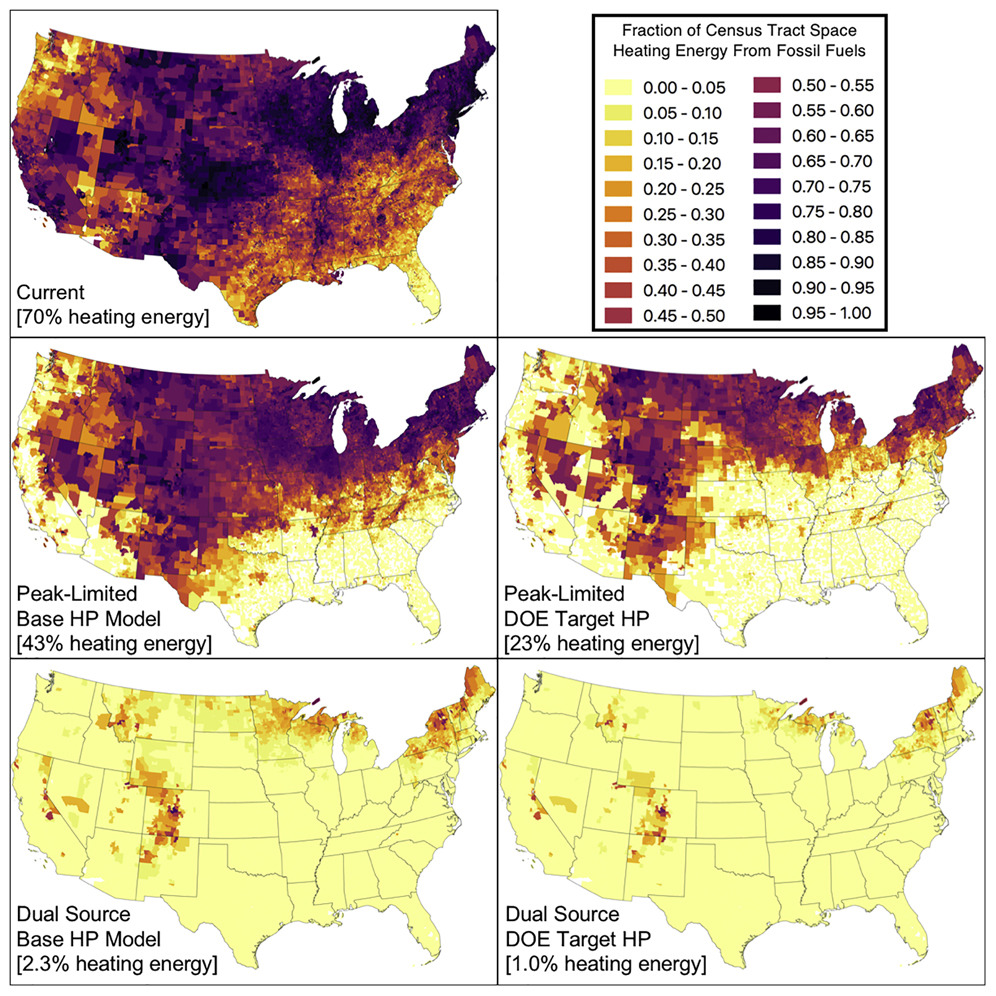Electricity Load Implications of Space Heating Decarbonization Pathways
Electricity Load Implications of Space Heating Decarbonization Pathways
- February 2020
- Peer-Reviewed Articles
- Multiple
Waite, M. & Modi, V. (2020). Electricity Load Implications of Space Heating Decarbonization Pathways. Joule, 4(2), doi: 10.1016/j.joule.2019.11.011.
ABSTRACT: We investigate implications of building space heating decarbonization pathways across the climate-diverse United States. We compute that an “all-electric” approach could require a 70% increase in nationwide electricity system capacity. New peak loads would be highly heterogeneous (e.g., 4-fold increase in some states) with very low load factors (fewer than 100 full load hours annually). Without increasing peak loads, currently available electric heat pumps can reduce fossil fuels to 43% of total heating energy supply (currently 70%). Future advances in heat pump technology could reduce this further to 23%; however, several challenging regions would remain. We show that installing heat pumps and retaining some fossil fuel equipment for use in only the coldest weather could reduce fossil fuels to 1%–3% of heating energy while progressively reducing fossil fuel heating capacity and avoiding electricity capacity upgrades. Therefore, strategic use of legacy infrastructure could facilitate a more flexible transition to low-carbon heating.
Read a blog post summarizing this article here.





